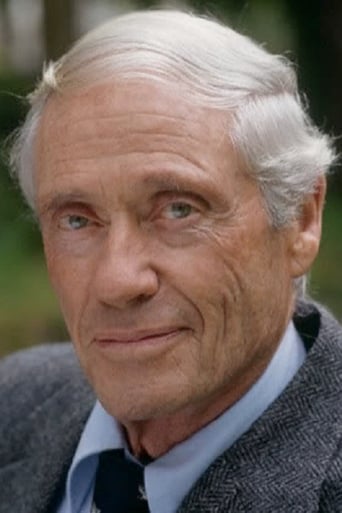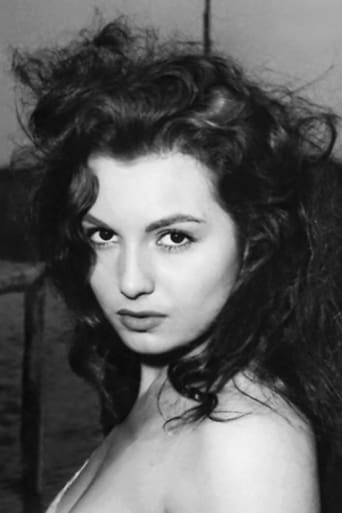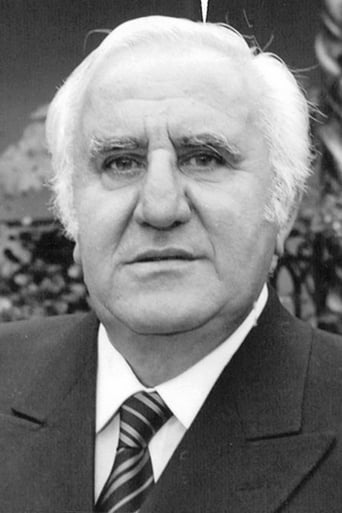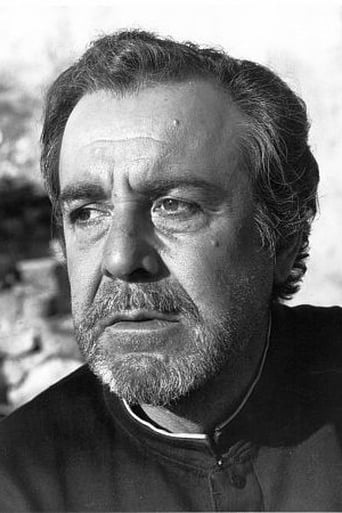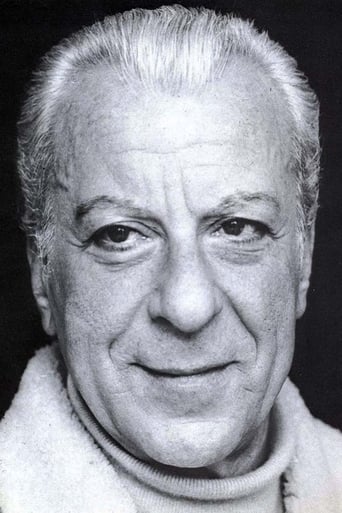Smartorhypo
Highly Overrated But Still Good
Chirphymium
It's entirely possible that sending the audience out feeling lousy was intentional
Fatma Suarez
The movie's neither hopeful in contrived ways, nor hopeless in different contrived ways. Somehow it manages to be wonderful
Scarlet
The film never slows down or bores, plunging from one harrowing sequence to the next.
JohnHowardReid
Copyright 31 December 1965 by Produzioni Artistiche Internationale/Arco Film (Rome)/Les Films du Siecle (Paris). An Italian/French co-production, filmed in Toledo, Spain. Released through 20th Century-Fox Film Corp. New York opening at the 68th Street Playhouse: 23 May 1967. U.S. release: 26 October 1966. U.K. release: floating from January 1967. Sydney opening at the Town. 8,492 feet. 94 minutes.SYNOPSIS: 1576: Arriving in Toledo from Italy to execute an altarpiece, the painter Domenico Theotocopulos, known as El Greco, soon finds fame and fortune, winning the favor not only of the Church but of the King. COMMENT: Easily the best film biography of a painter since "Rembrandt". Admittedly, the scriptwriters were able to give themselves a freer hand than usual by our almost complete lack of knowledge of the painter's life. But those details we do know are faithfully interpreted in the film. And the make-up is so good that some of the portraits seem to have stepped alive from El Greco's canvasses. The most striking example, of course, is that of Cardinal Nino de Guevara played by Mario Feliciani. Viewed from every perspective, the make-up is absolutely faultless. And there are others: the portraits in the "Burial of Count Orgaz" seem to be reflected on the screen, the resemblance of Brother Felix is more than passable; and Fernando Rey's Philip II is an astonishing likeness.But even more striking than these character impositions are the fantastically exquisite costumes and the incredibly dazzling sets. Director Salce has a fine eye for striking pictorial compositions. He's one of the few directors who used the CinemaScope screen creatively and with imaginative artistry. Who could forget El Greco's spacious studio, littered with all the wondrous impedimenta of his craft including finished and nascent masterpieces lying higgledy-piggledy in odd corners among all sorts of odds and ends?Other marvelous images: the staggeringly baroque ornamentation of the cathedral as the camera tracks unceasingly up from the high altar over hundreds and hundreds of superbly carved bas-reliefs, their exquisite detail invisible to the congregation below; the stark, white-washed walls of the inquisitorial hall thrown into dramatic contrast with lines of black-robed and hooded prosecutors.All these so real yet so exotic images are superbly captured through the painstaking magic of ace color cinematographer Leonida Barboni. Rarely has the capacity of the wide CinemaScope screen been used to such advantage or filled with such harmonious compositions.Most of the actors are Italian, but their dubbing has been much better performed than usual, under the guidance of dialogue director John Francis Lane. Leo Genn, who dubs the voice of Brother Felix, is outstanding. Mel Ferrer, who appears a little ill at ease in the opening moments, warms to the part most adeptly as the plot progresses. In fact this role is probably his best ever.Technical credits are a tribute to Ferrer's efforts behind the camera. Ennio Morriconi — yet to make his reputation with the Dollar westerns — has contributed a richly atmospheric score, whilst the mysterious Fred Burnley's film editing is admirably swift and fast- paced. (Not exactly a name to conjure with, Burnley's other films are a nondescript bunch including Tarzan's Three Challenges, Disk-O- Tek Holiday and The Girl Getters).Although the movie obviously cost millions to make — and it's all money most intelligently and creatively spent — "El Greco" was not a resounding box-office success. For one thing, the personality of the historical El Greco is too faithfully portrayed to be appreciated by a general audience. A moody and temperamental man, given to sudden emotional outbursts, but mostly eating humble pie and currying favor with the nobility, always deferring to their suggestions; and painting, for the most part, within rigid ecclesiastical rules. His character is by no means a wholly sympathetic one with which the audience can identify. And the same applies to all the other characters. Even the comic servant is revealed as a despicable coward. And the story itself, with its ghastly conclusion, is scarcely one to be endorsed by a mass audience. It is sad to think that the price of artistic integrity is mass audience alienation, but there it is. We may have to wait many years for another biography of its worth.
bkoganbing
A great deal of time before and after the years covered in this life of El Greco that a certain amount of context is lost. The film El Greco is about his art, but it's also about his life and his greatest love.Mel Ferrer no doubt in the hopes that the film would lift him into the ranks of the Hollywood elite produced and starred in this film with a European cast. There are no other Americans in the film, but a few familiar faces from European productions. Most prominent will be Adolfo Celi who is the one who first brings El Greco to Spain on a commission to paint his daughter's portrait, the daughter played by Rosanna Schiaffino. And Schiaffino becomes the great love of his life. But Spain was also home to that most repressive of religious institutions the Inquisition. Their penalties were most severe for deviancy from the Roman Catholic faith and in fact the Church in Rome was virtually a Spanish protectorate in the 16th century. A lot of people used the Inquisition to settle some personal scores. Institutions to preserve orthodoxy in any society usually sooner or later become instruments of repression and/or vengeance. And El Greco made a lot of enemies. Fernando Rey plays Philip II of Spain, the most powerful man in Europe and the Americas as he colonized most of it while he was King. Such people as Raymond Massey and Montagu Love played him before, a great deal more fanatical than Rey is. But Rey does come across as a man with the burdens of the world on him and for the most part they really were. Ferrer is aiming for his royal patronage.El Greco was born in Crete which was part of the Venetian city/state/republic and that brought him to Italy and then to Spain specifically Toledo. He lived a good deal longer than the action in this film. Ferrer gives a restrained and dignified performance, but the man who really could have done this role justice would have been Tyrone Power and he hadn't been available for 8 years.El Greco the film is beautiful and dignified, but terribly slow moving. It never did for Mel Ferrer what he intended.
Armand
About an artist. And about a slice of Spain history. A love story and definition of art against prejudices. In same time,delicate description of stranger condition. A Hollywood production, with same recipes of "ad usum delphini" history, glamor and unhappy love, with a magnificent Mell Ferrer and sweet colors. Seed of nostalgia, chair for rediscover of past, few flavor of childhood, with great heroes and nice adventures, "El Greco" is form of a fado. Portrait of an era, circle of magic gestures and hope, victory of a not-yet born Don Quijote. It is not a masterpiece. But it is more that. An escape. And lucky coin. Window. To a world who believes in everyone.
Neil Doyle
EL GRECO tackles the life of the famous artist who spent most of his life in Toledo, Spain and whose paintings are marked by his unique style of portraying church figures and the common man. But this film is a weak attempt that lacks substance in telling the painter's story which, for dramatic conflict, involves his brush with the Spanish Inquisition and eventual dismissal of the charges, which changed his life forever.MEL FERRER is admirable in the title role, the costumes and sets filmed in Madrid are sumptuous and some of the supporting roles are well played, especially RENZO GIOVAMPIETRO as Brother Felix (who sounds an awful lot like Leo Genn in "Quo Vadis"). But the final scenes with Elk Greco immersing himself in the world of the common man and the insane, are a mishmash and end the film on a weak note. The choral work is effective but becomes almost too obtrusive before the film is over.Hopefully, some day someone will do a film on "El Greco" that is as substantial as the earlier Hollywood film on "Rembrandt" and the Van Gough treatment in "Lust for Life". But EL GRECO is flawed by a weak script and slow pacing under the direction of Luciano Salce.Not recommended.
